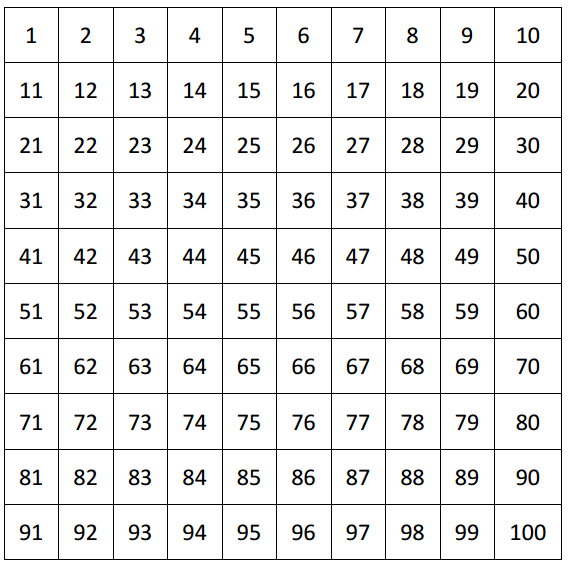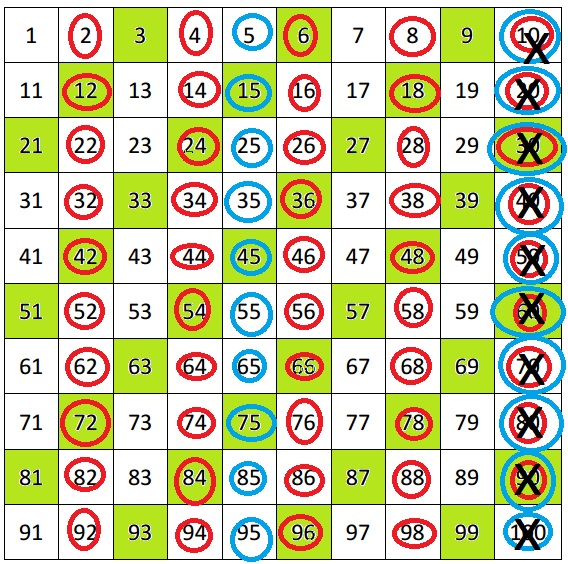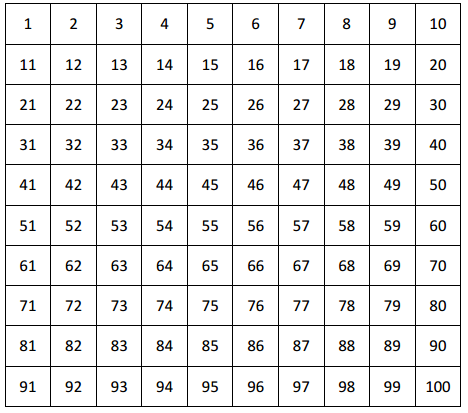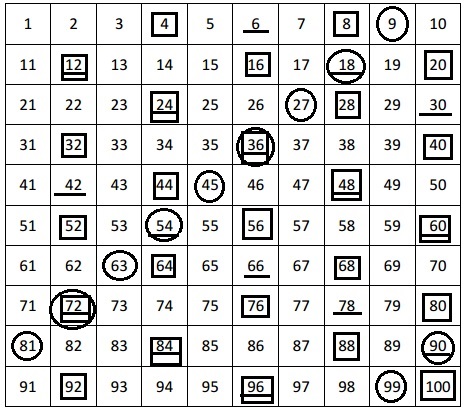Engage NY Eureka Math 4th Grade Module 3 Lesson 24 Answer Key
Eureka Math Grade 4 Module 3 Lesson 24 Problem Set Answer Key
Question 1.
For each of the following, time yourself for 1 minute. See how many multiples you can write.
a. Write the multiples of 5 starting from 100.
Answer:
100, 105, 110, 115, 120, 125, 130, 135, 140, 145, 150, 155, 160, 165, 170, 175, 180, 185, 190, 195, 200, 205.
Explanation:
Wrote the multiples of 5 starting from 100 as
100, 105, 110, 115, 120, 125, 130, 135, 140, 145, 150, 155, 160, 165, 170, 175, 180, 185, 190, 195, 200, 205.
b. Write the multiples of 4 starting from 20.
Answer:
20, 24, 28, 32, 36, 40, 44, 48, 52, 56, 60, 64, 68, 72, 76, 80, 84, 88, 92, 96, 100, 104, 108, 112, 116, 120,
c. Write the multiples of 6 starting from 36.
Answer:
36, 42, 48, 54, 60, 66, 72, 78, 84, 90, 96, 102, 108, 114, 120, 126, 132, 138, 144, 150, 156, 162, 168,
Question 2.
List the numbers that have 24 as a multiple.
Answer:
The numbers that have 24 as a multiple are
1, 2, 3, 4, 6, 8, 12, 24,
Explanation:
Listed the numbers that have 24 as a multiple are
1, 2, 3, 4, 6, 8, 12, 24,
1 X 24 = 24,
2 X 12 = 24,
3 X 8 = 24,
4 X 6 = 24,
8 X 3 = 24,
12 X 2 = 24,
24 X 1 = 24.
Question 3.
Use mental math, division, or the associative property
to solve. (Use scratch paper if you like.)
a. Is 12 a multiple of 4? __Yes____ Is 4 a factor of 12? ____Yes___
Answer:
Yes, 12 is a multiple of 4,
Yes, 4 is a factor of 12,
Explanation:
Yes, 12 is a multiple of 4, 4 X 3 = 12,
So yes 4 is a factor of 12.
b. Is 42 a multiple of 8? __No____ Is 8 a factor of 42? ___No____
Answer:
No, 14 is not a multiple of 8,
No, 8 is not a factor of 42,
Explanation:
No, 42 is not a multiple of 8, 8 X 5 = 40, remainder 2
So no 8 is not a factor of 42.
c. Is 84 a multiple of 6? ___Yes___ Is 6 a factor of 84? _Yes______
Answer:
Yes, 84 is a multiple of 6,
Yes, 6 is a factor of 84,
Explanation:
Yes, 84 is a multiple of 6, 6 X 14 = 84,
So, yes 6 is a factor of 84.
Question 4.
Can a prime number be a multiple of any other number except itself? Explain why or why not.
Answer:
Yes a prime number will be a multiple of other number except itself and 1,
Explanation:
We know a prime number has 2 factors, 1 and itself, So, a prime number will be a multiple of other number except itself and 1.
Question 5.
Follow the directions below.

a. Circle in red the multiples of 2. When a number is a multiple of 2, what are the possible values for the ones digit?
Answer:

Circled in red the multiples of 2 as 2, 4, 6, 8, 10, 12, 14, 16, 18, 20, 22, 24, 26, 28, 30, 32, 34, 36, 38, 40, 42, 44, 46, 48, 50, 52, 54, 56, 58, 60, 62, 64, 66, 68, 70, 72, 74, 76, 78, 80, 82, 84, 86, 88, 90, 92, 94, 96, 98,
When a number is a multiple of 2, the possible values for the ones digit are 2, 4, 6, 8, 0,
b. Shade in green the multiples of 3. Choose one. What do you notice about the sum of the digits? Choose another. What do you notice about the sum of the digits?
Answer:
The multiples of 3 as 3, 6, 9, 12, 15, 18, 21, 24, 27, 30, 33, 36, 39, 42, 45, 48, 51, 54, 57, 60, 63, 66, 69, 72, 75, 78, 81, 84, 87, 90, 93, 96 and 99
The sum of the digits is also a multiples of 3,
Explanation:
Shaded in green the multiples of 3 as 3, 6, 9, 12, 15, 18, 21, 24, 27, 30, 33, 36, 39, 42, 45, 48, 51, 54, 57, 60, 63, 66, 69, 72, 75, 78, 81, 84, 87, 90, 93, 96 and 99 as shown above in the picture, Choosed one number we notice about that the sum of the digits are multiples of 3, 3, 6 = 3 X 2.
c. Circle in blue the multiples of 5. When a number is a multiple of 5, what are the possible values for the ones digit?
Answer:
Circled in blue the multiples of 5 as 5, 10, 15, 20, 25, 30, 35, 40, 45, 50, 55, 60, 65, 70, 75, 80, 85, 90, 95 and 100, the possible values for the ones digit are 5, 0,
Explanation:
Circled in blue the multiples of 5 as 5, 10, 15, 20, 25, 30, 35, 40, 45, 50, 55, 60, 65, 70, 75, 80, 85, 90, 95 and 100, When a number is a multiple of 5 the possible values for the ones digit are 5, 0.
d. Draw an X over the multiples of 10. What digit do all multiples of 10 have in common?
Answer:
The multiples of 10 are 10, 20, 30, 40, 50, 60, 70, 80, 90, 100. They all have a zero in the ones place,
Explanation:
The multiples of 10 are 10, 20, 30, 40, 50, 60, 70, 80, 90, 100.
Drawn an X over the multiles of 10, all the digits which are multiples of 10 have zero in the ones place as common.
Eureka Math Grade 4 Module 3 Lesson 24 Exit Ticket Answer Key
Question 1.
Fill in the unknown multiples of 11.
5 × 11 = __55___
6 × 11 = __66___
7 × 11 = __77___
8 × 11 = __88___
9 × 11 = ___99__
Answer:
5 × 11 = 55
6 × 11 = 66
7 × 11 = 77
8 × 11 = 88
9 × 11 = 99,
Explanation:
Filled in the unknown multiples of 11 as
5 × 11 = 55,
11
X 5
55
6 × 11 = 66,
11
X 6
66
7 × 11 = 77,
11
X 7
77
8 × 11 = 88,
11
X 8
88
9 × 11 = 99,
11
X 9
99 respectively.
Question 2.
Complete the pattern of multiples by skip-counting.
7, 14, __21__, 28, __35__, ___42___, ___49___, __56____, ___63___, __70____
Answer:
7, 14, 21, 28, 35, 42, 49, 56, 63, 70,
Explanation:
Completed the pattern of multiples by skip-counting 7 as
7, 14, 21, 28, 35, 42, 49, 56, 63, 70,
7 X 1 = 7
7 X 2 = 14
7 X 3 = 21
7 X 4 = 28
7 X 5 = 35
7 X 6 = 42
7 X 7 = 49
7 X 8 = 56
7 X 9 = 63
7 X 10 = 70.
Question 3.
a. List the numbers that have 18 as a multiple.
Answer:
The numbers that have 18 as a multiple are
1, 2, 3, 6, 9, 18,
Explanation:
Listed the numbers that have 18 as a multiple are
1, 2, 3, 6, 9, 18,
1 X 18 = 18,
2 X 9 = 18,
3 X 6 = 18,
6 X 3 = 18,
9 X 2 = 18,
18 X 1 = 18.
b. What are the factors of 18?
Answer:
Factors of 18 are 1, 2, 3, 6, 9, 18,
Explanation:
Factors of 18 are
1 X 18 = 18,
2 X 9 = 18,
3 X 6 = 18,
6 X 3 = 18,
9 X 2 = 18,
18 X 1 = 18,
1, 2, 3, 6, 9, 18.
c. Are your two lists the same? Why or why not?
Answer:
Yes the two lists are the same,
Explanation:
Yes the two lists are the same as
A multiple is a number that can be divided by another number a certain number of times without a remainder.
A factor is one of two or more numbers that divides a given number without a remainder.
As multiples of 18 are also the factors of 18, So two lists are the same.
Eureka Math Grade 4 Module 3 Lesson 24 Homework Answer Key
Question 1.
For each of the following, time yourself for 1 minute. See how many multiples you can write.
a. Write the multiples of 5 starting from 75.
Answer:
75, 80, 85, 90, 95, 100, 105, 110, 115, 120, 125, 130, 135, 140, 145, 150, 155, 160, 165, 170,
b. Write the multiples of 4 starting from 40.
Answer:
40, 44, 48, 52, 56, 60, 64, 68, 72, 76, 80, 84, 88, 92, 96, 100, 104, 108, 112, 116, 120, 124, 128, 132, 136, 140.
Explanation:
Wrote the multiples of 4 starting from 40 as 40, 44, 48, 52, 56, 60, 64, 68, 72, 76, 80, 84, 88, 92, 96, 100, 104, 108, 112, 116, 120, 124, 128, 132, 136, 140.
c. Write the multiples of 6 starting from 24.
Answer:
24, 30, 36, 42, 48, 54, 60, 66, 72, 78, 84, 90, 96, 102, 108, 114, 120, 126, 132, 138, 144, 150, 156,
Question 2.
List the numbers that have 30 as a multiple.
Answer:
The numbers that have 30 as a multiple are 1, 2, 3, 5, 6, 10, 15, 30,
Explanation:
Listed the numbers that have 30 as a multiple are
1, 2, 3, 5, 6, 10, 15, 30,
1 X 30 = 30,
2 X 15 = 30,
3 X 10 = 30,
5 X 6 = 30,
6 X 5 = 30,
10 X 3 = 30,
15 X 2 = 30,
30 X 1 = 30.
Question 3.
Use mental math, division, or the associative property to solve. (Use scratch paper if you like.)
a. Is 12 a multiple of 3? __Yes____ Is 3 a factor of 12? __Yes_____
Answer:
Yes, 12 is a multiple of 3,
Yes, 3 is a factor of 12,
b. Is 48 a multiple of 8? ___Yes___ Is 48 a factor of 8? __Yes_____
Answer:
Yes, 48 is a multiple of 8,
Yes, 8 is a factor of 48,
c. Is 56 a multiple of 6? ___No___ Is 6 a factor of 56? __No_____
Answer:
No, 6 is not a multiple of 56,
No, 6 is not a factor of 56,
Explanation:
No, 56 is not a multiple of 6, 6 X 9 = 54, remainder 2
So no 6 is not a factor of 56.
Question 4.
Can a prime number be a multiple of any other number except itself? Explain why or why not.
Answer:
Yes a prime number will be a multiple of other number except itself and 1,
Explanation:
We know a prime number has 2 factors, 1 and itself,
So, a prime number will be a multiple of other number except itself and 1.
Question 5.
Follow the directions below.

a. Underline the multiples of 6. When a number is a multiple of 6, what are the possible values for the ones digit?
Answer:

Underlined the multiples of 6 as 6, 12, 18, 24, 30, 36, 42, 48, 54, 60, 66, 72, 78, 84, 90, 96,
When a number is a multiple of 6, the possible values for the ones digit are 6, 0,
Explanation:
Underlined the multiples of 6 as 6, 12, 18, 24, 30, 36, 42, 48, 54, 60, 66, 72, 78, 84, 90, 96, When a number is a multiple of 6, the possible values for the ones digit are 6, 0.
b. Draw a square around the multiples of 4. Look at the multiples of 4 that have an odd number in the tens place. What values do they have in the ones place?
Answer:
The multiples of 4 are 4, 8, 12, 16, 20, 24, 28, 32, 36, 40, 44, 48, 52, 56, 60, 64, 68, 72, 76, 80, 84, 88, 92, 96, 100, the multiples of 4 that have an odd number in the tens place have even number in the ones place, they are 12, 16, 32, 36, 52, 56, 72, 76, 92 and 96,
c. Look at the multiples of 4 that have an even number in the tens place. What values do they have in the ones place? Do you think this pattern would continue with multiples of 4 that are larger than 100?
Answer:
The multiples of 4 are 4, 8, 12, 16, 20, 24, 28, 32, 36, 40, 44, 48, 52, 56, 60, 64, 68, 72, 76, 80, 84, 88, 92, 96, 100, the multiples of 4 that have an even number in the tens place have even number in the ones place, they are 20, 24, 28, 40, 44, 48, 60, 64, 68, 80, 84, 92, 96 and 100,
Yes, I think this pattern would continue with multiples of 4 that are larger than 100,
d. Circle the multiples of 9. Choose one. What do you notice about the sum of the digits? Choose another one. What do you notice about the sum of the digits?
Answer:
The multiples of 9 as 9, 18, 27, 36, 45, 54, 63, 72, 81, 90 and 99 , The sum of the digits is also a multiples of 9,
Explanation:
Circled the multiples of 9 as 9, 18, 27, 36, 45, 54, 63, 72, 81, 90 and 99 as shown above in the picture,
Choosed one number we notice about that the sum of the digits are multiples of 9 as 9 , 18 = 9 X 2.